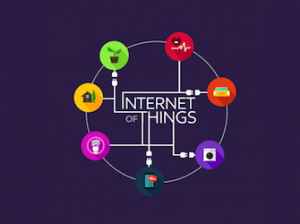 The Internet of Things is the latest catch phrase du jour in the high tech sector, and for good reason. The Internet of Things has stolen the limelight the past two years at the Consumer Electronics Show (CES), see our 2014 and 2015 coverage, with as many as 900 exhibitors in the IoT space at CES 2015. By 2020, the market for this industry alone is expected to rise to $7.1 trillion. By the year 2050, technology experts predict that there will be 50 billion devices that are connected to the Internet.
The Internet of Things is the latest catch phrase du jour in the high tech sector, and for good reason. The Internet of Things has stolen the limelight the past two years at the Consumer Electronics Show (CES), see our 2014 and 2015 coverage, with as many as 900 exhibitors in the IoT space at CES 2015. By 2020, the market for this industry alone is expected to rise to $7.1 trillion. By the year 2050, technology experts predict that there will be 50 billion devices that are connected to the Internet.
But what exactly is the Internet of Things? Cisco Systems says that the Internet of Things “is increasing the connectedness of people and things on a scale that once was unimaginable.” Like many definitions of IoT, this one focuses on the vastness of what is encompassed, without necessarily providing concrete, actionable information. To some extent that is because the Internet of Things is a concept that best resembles what just a few years ago seemed like science fiction, but today seems to be science reality that promises to change the way that we are connected to and use information. Technology in this sector is advancing so rapidly that it is sometimes difficult to characterize.
The speedy evolution of what defines “Internet of Things” is why the phrase is frequently called a concept, but it really is much more than that. It is probably best to say that the IoT is the phrase used to describe the not too distant future where ordinary, everyday objects are connected to the Internet. That means that those objects, which can range from wearable devices to washing machines to lamps and coffee makers, will not only be able to relate to the user, but will be able to relate to one another and act in unison. We see glimpses of this with synchronization of devices from desktop to laptop to tablet to smartphone, but as both hardware and software advance the connectivity of devices that most see today will represent only the crudest evolutionary step in technological terms. For more basic definitions see A Simple Explanation of ‘The Internet of Things’ and What is the Internet of Things (IoT).
As with any technology market predicted to rapidly grow, there has been a lot of innovation from a variety of leading technology companies, including IBM, Apple, Google, Samsung, Intel, Qualcomm, Texas Instruments and many more. There have also been many exciting innovations from both individuals and start-up companies. In fact, some of the largest corporations have been actively acquiring start-up companies dedicated to innovating in the IoT space. For example, just recently Intel signed an agreement to acquire German chipmaker and home networking company Lantiq in order to bolster its IoT holdings. In September 2014, Huawei acquired UK startup Neul, a company focused on developing novel wireless technologies that keep energy requirements low. In August 2014, Samsung announced that they had agreed to acquire SmartThings, a producer of new types of connected devices and unique apps. In January 2014, Google acquired Nest Labs for $3.2 billion. The list goes on.
Of course, patents can be found whenever there is a technology revolution, and connecting the world through both traditionally high-tech and low-tech devices is absolutely a revolution. The vast and all-encompassing nature of the Internet of Things, coupled with the almost impossible projections of market size and number of devices that will be connected, means that there will be a lot of patents as companies funded by investors demand exclusive rights for the new, exciting and innovative technologies at the core of the Internet of Things.
In the wake of the Supreme Court’s decision in Alice v. CLS Bank, the popular belief has been that the bottom has fallen out of the patent market. The market did certainly slow down in the months immediately following the decision, but according to Tyron Stading, President and Founder of Innography, there were a large number of patents bought and sold during fourth quarter of 2014, which could signal that the market is rebounding.
Furthermore, the majority of cases litigated in the Alice space have related to financial technologies or other business method technologies that sought to implement a real world process. While “the cloud” has been around in one form or another since the 1970s, the cloud of the ‘70s bears little or no relationship to the cloud of today. Still, while excitement may be dwindling somewhat for “the cloud,” the cloud has those older analogues in a way that smart homes, for example, do not. Smart homes have been the thing of science fiction and cartoons, tickling our imagination from Star Trek to the Jetsons. Given the way that the law of patent eligibility has developed in the wake of Alice, both at the Federal Circuit (particularly in the DDR Holdings case) and in the USPTO interim guidance and abstract idea hypotheticals, that should bode well for smart homes and other new generation technologies that collectively qualify as Internet of Things technologies.
“Most people are betting that there will be some kind of reversal, maybe not now but perhaps 3 or 4 years down the road, so a patent with 10 years of life could be quite attractive, particularly in an area of innovation like smart homes,” explained Tim Schnurr, who is Chief Operating Officer at ICAP Patent Brokerage. It is this optimistic belief that the pendulum will swing back toward innovators and stronger patent rights that seems to be buoying the market. Of course, the potential for a $7 trillion market within 5 years is also contributing to great interest with technologies and patent portfolios in the IoT space.
“We are trying to market portfolios that are related to industries expected to be profitable in the near term and have a real damages argument,” explained Schnurr. “Buyer feedback suggests to us that the Internet of Things is an area people are chasing. There is great interest in smart home technology, wearables and health monitoring, as well as hot spots, 4G and cellular offloading.”

![[IPWatchdog Logo]](https://ipwatchdog.com/wp-content/themes/IPWatchdog%20-%202023/assets/images/temp/logo-small@2x.png)

![[[Advertisement]]](https://ipwatchdog.com/wp-content/uploads/2023/01/2021-Patent-Practice-on-Demand-1.png)

![[Advertisement]](https://ipwatchdog.com/wp-content/uploads/2024/04/Artificial-Intelligence-2024-REPLAY-sidebar-700x500-corrected.jpg)
![[Advertisement]](https://ipwatchdog.com/wp-content/uploads/2024/04/Patent-Litigation-Masters-2024-sidebar-700x500-1.jpg)

![[Advertisement]](https://ipwatchdog.com/wp-content/uploads/2021/12/WEBINAR-336-x-280-px.png)
![[Advertisement]](https://ipwatchdog.com/wp-content/uploads/2021/12/2021-Patent-Practice-on-Demand-recorded-Feb-2021-336-x-280.jpg)
![[Advertisement]](https://ipwatchdog.com/wp-content/uploads/2021/12/Ad-4-The-Invent-Patent-System™.png)






Join the Discussion
No comments yet.